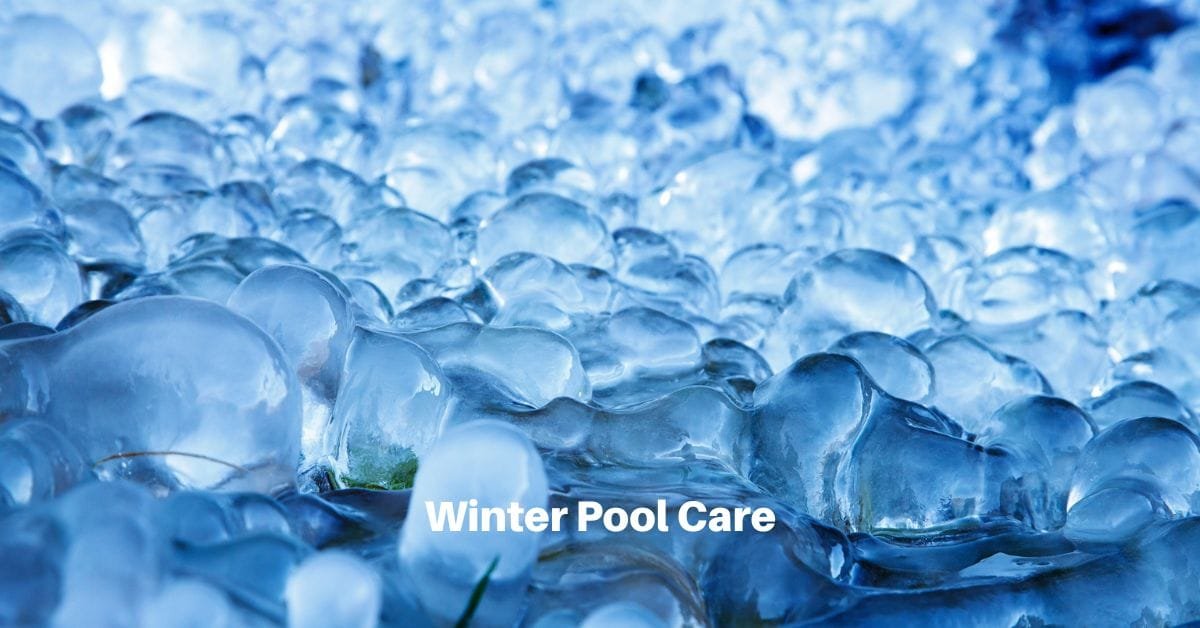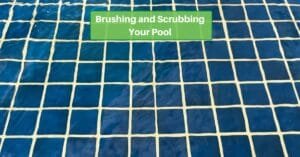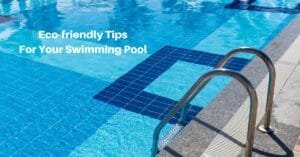Just because you don’t use your swimming pool during winter doesn’t mean you can neglect the safety of your family and pets. Summer safety measures may focus on swimming and water activities, but winter introduces unique challenges.
Frozen surfaces, heavy snow, and covered pools can all pose risks. Here, we’ll help you safely navigate winter safety essentials, keeping your pool secure and your loved ones protected during the colder months.
Preparing Your Pool for Winter Safety
Proper preparation is the first step in winter pool safety. A well-secured pool minimizes risks and prevents accidents during the off-season.
Invest in a Safety Cover
Standard pool covers protect against debris but aren’t designed to support weight. Safety covers, however, are engineered to withstand the load of a person or a pet, so there’s a critical barrier in case of slips or falls. When choosing a safety cover, ensure it fits snugly across your pool, leaving no gaps at the edges.
Remove Pool Accessories
Ladders, diving boards, and other pool accessories should be removed before winterizing your pool. These structures can be tripping hazards or attract curious children and animals. Removing them simplifies the winterization process and enhances overall safety.
Check the Cover Regularly
Monitor your pool cover throughout the season for signs of wear or improper positioning. Heavy snow and ice can displace or damage covers, exposing areas of the pool. Use a long-handled broom or specialized tools to clear snow without puncturing the cover.
Proper preparation ensures your pool is safe and secure, setting the stage for a worry-free winter.
Preventing Ice-Related Hazards
Ice can pose significant risks around a swimming pool in winter, mainly if the pool is left uncovered or improperly managed. Ensuring safety means taking proactive measures to address ice formation and its potential dangers.
Never Assume Ice is Safe to Walk On
Even if your pool appears frozen solid, the ice may not be strong enough to support weight. Walking on it can lead to dangerous falls through thin ice, which poses the risk of hypothermia or drowning. Always keep people and pets away from the pool’s surface during freezing conditions.
Use Ice Breakers or Floating Devices
Floating devices like inflatable balls can prevent the pool from freezing entirely. By disrupting the formation of a solid ice layer, these tools make the area less hazardous while protecting the pool structure from freeze-related damage.
Add Pool Alarms for Extra Security
Motion-sensitive pool alarms can alert you to unexpected movement near or in the pool. These are useful for preventing accidents involving children or animals who may venture too close.
Create a Barrier Around the Pool
A sturdy fence with a locked gate is one of the most effective ways to secure your pool area in winter. If your pool is not already fenced, consider temporary barriers for seasonal use. This added precaution can prevent unauthorized access to the pool during winter.
Taking these steps minimizes ice-related hazards and helps ensure a safer pool environment during the year’s coldest months.
Managing Winter Pool Covers for Safety
A quality winter pool cover is critical in keeping your pool area safe throughout the winter. Proper usage and maintenance can help avoid accidents, reduce cleaning efforts, and safeguard the pool from winter damage.
Regularly Inspect and Maintain the Cover
Even a high-quality cover can develop wear and tear over time. Check for rips, loose anchors, or debris accumulation that could weaken its integrity. Addressing these issues promptly ensures the cover remains effective throughout the season.
Prevent Water Accumulation on the Cover
Standing water from rain or melted snow can create hazards by freezing into slippery patches or stressing the cover’s material. Use a pool cover pump to suck away excess water, keeping the cover functional and safe.
Keep the Perimeter Clear
Avoid storing heavy equipment or sharp objects near the pool cover that could puncture it or cause undue strain. Clear any snow or ice buildup around the edges to reduce weight and maintain easy access for regular inspections.
Reinforce Safety Rules Around Covered Pools
Even with a safety cover, educating family members about pool safety is vital. Emphasize that the pool area is off-limits during the off-season, and always supervise children playing nearby.
By following these steps, you can ensure that your pool cover protects your pool and contributes to a safer environment during winter.
Preventing Ice Dams and Pool Equipment Damage
Winter weather brings risks of ice formation in and around your pool, which can significantly damage equipment and safety concerns. Proper preparation and maintenance are essential for avoiding these issues.
Drain Pool Equipment
Before freezing temperatures set in, ensure all pool equipment, including pumps, filters, and heaters, is completely drained. Residual water can freeze, expand, and cause cracks or other costly damage.
Use Pool Antifreeze in Key Areas
For plumbing lines that cannot be fully drained, applying pool-safe antifreeze can prevent water from freezing and damaging the pipes. Be sure to follow manufacturer guidelines to ensure safety and effectiveness.
Maintain a Stable Water Level
A pool’s water level should remain low enough to account for freezing but high enough to support the pool cover. Regularly monitor water levels throughout the winter to avoid problems caused by fluctuating conditions.
Remove Ice Buildup Promptly
Ice dams can form around the edges of the pool cover or on deck surfaces, creating slipping hazards and excess weight that can strain the cover. Use pool-safe tools or warm water to gently remove ice buildup when necessary.
Store Pool Accessories Properly
Remove and store pool ladders, diving boards, or other accessories before the first freeze. Leaving these items in place can lead to cracks or corrosion; removing them allows for better coverage and protection during winter.
Taking these precautions helps maintain the condition of your pool and equipment, ensuring a smoother transition back to use when warmer weather returns.
Winterizing your swimming pool isn’t just about preventing damage to equipment or water quality—it’s about ensuring the safety of everyone around it. The steps we’ve laid out help minimize risks and preserve the integrity of your pool. Taking these precautions creates a safe environment during the colder months so you can enjoy a stress-free return to your pool when warmer weather arrives.
Remember, the key to winter pool safety is preparation and vigilance. With the proper measures, your pool can remain a valuable, safe feature of your home all year round.









